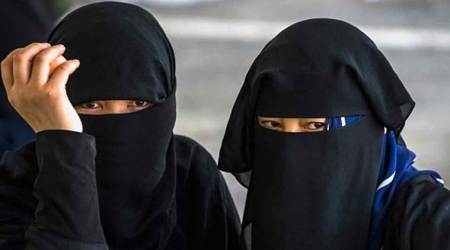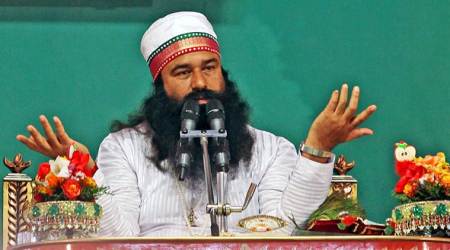 Students from the Left Coalition rejoice as they lead in the JNUSU polls. (Source: Express Photo by Amit Mehra)
Students from the Left Coalition rejoice as they lead in the JNUSU polls. (Source: Express Photo by Amit Mehra)
Written by Anshul Trivedi
The United Left has once again swept the Jawaharlal Nehru University Students Union elections convincingly. The RSS-aligned Akhil Bhartiya Vidyarthi Parishad (ABVP) has emerged as the second biggest force on campus, finishing second on all major posts while the Birsa Ambedkar Phule Students Association (BAPSA) has come in third. However, to make sense of these results and the continued dominance of Left and progressive forces in this University, one needs to understand the unique culture of JNU politics.
A Unique Culture of Politics
JNU is one of the few universities which has zero interference of money and muscle power in its entire political process unlike other places. The political culture of JNU ensures that there is absolute freedom of speech guaranteed to every single individual without fear of retribution; which explains how Mohammed Farooque, a physically challenged student could contest this year’s election, take on all the established parties in the fray and poll an impressive 419 votes.
This culture of free expression also explains the controversial February 9, 2016 incident, when students held a protest demonstration against the Parliament attack convict Afzal Guru and Kashmiri separatist Maqbool Bhatt during which allegedly anti-national slogans were raised, leading to the jailing of several students, including then JNUSU president Kanhaiya Kumar. Speech, howsoever repugnant, is answered by more speech here and not violence.
The other feature of JNU politics which sets it apart is the importance attached to the question of gender and the massive participation of women students in the political process. There are regular elections to the committee against sexual harassment which ensures that issues of gender are part of the mainstream political discourse. These two factors ensure that a rich diversity of ideologies and opinions get heard and debated among a large cross section of the community which chooses to participate in them.
Left has been a Constant
The politics of JNU has been fundamentally ideological. Since the time of its establishment almost five decades ago, the Left has been a constant pole in this University. While the Campus has remained insulated from the more pernicious aspects of student politics which have plagued other campuses, JNU has been intimately influenced by developments across the country and the globe. All politics has been shaped either for or against the Left and the Campus has always reflected the political and ideological shifts in the national political scenario.
So in the decade of the 1970’s the Socialists were an ascendant force at a time when Jai Prakash was leading the anti-Emergency Movement. Then there was a considerable churning during the demolition of the Babri Masjid and Mandal Commission agitations which threw up new formations which challenged the Left. In the decade of the 1990’s, during NDA rule, the ABVP became a dominant anti-Left pole on Campus and even managed to win the post of President once.
Similar mobilizations were witnessed during the implementation of the OBC reservations during UPA rule; at the time JNU saw the meteoric electoral rise of the Youth For Equality (YFE) which has subsequently disappeared. The Nandigram incident broke the back of the till then dominant CPI(M)-affiliated Students Federation of India (SFI) and catapulted the extreme Left-wing All India Students Association (AISA) into prominence, when the student community decided to elect an alternative Left to lead them.
The Present Situation
The entire country is experiencing a Hindutva wave – which is aggressive, unapologetic and only growing stronger. In the aftermath of the February 9, 2016 incident, the majority of the students and alumni of JNU is convinced that the university is under attack from an ideologically motivated government at the centre, which wants to shut JNU down, malign it and use it for its own ideological ends; this incident created conducive conditions for polarization within the campus and allowed the ABVP to consolidate its ranks and pose a strong ideological and electoral challenge to the Left.
In the larger context, apart from the Left, the major political opposition to Hindutva, has been posed by Bahujan politics which took the form of protests for justice for Rohith Vemula, Bhim Army protests, anti-atrocity mobilizations in Una, to name a few. The BAPSA is a reflection of growing Bhaujan assertion within University campuses. To be sure, many Dalit-Bahujan forums and electoral forces have existed on the Campus in the past but BAPSA is by far the most organized electoral force to emerge in recent years.
The Left outside the Campus has been unable to accord issues of social justice as much prominence as was warranted and was found wanting on questions of ensuring representation. However, within JNU, the Left has tried to learn from mistakes outside and ensured representation within its ranks and leadership. Since JNUSU elections restarted in 2012, the Left has had 7 Presidents out of which only 2 belong to non-oppressed sections socially; the story is similar for other posts as well. The immediate trigger for the rise of BAPSA has been the failure of the Left on campus to ensure reduction of viva voce marks. This discontent formed the immediate context of its rise; however, it could not repeat its last year’s performance because of the consolidation of major Left forces and their inability to locate their ideological anchor – whether they belong to the Left tradition or oppose it.
What lies in store?
The Left has survived in JNU for decades because it has ideologically combated its opponents. The present Hindutva wave has thrown up new ideological challenges, formations and opportunities to the Left on campus; which has been more creative than its counterparts outside. How it deals with them, in times when the contradiction between the Right and the Left is sharpening across the world, will decide whether or not the Left will continue to be a dominant force in JNU politics.

